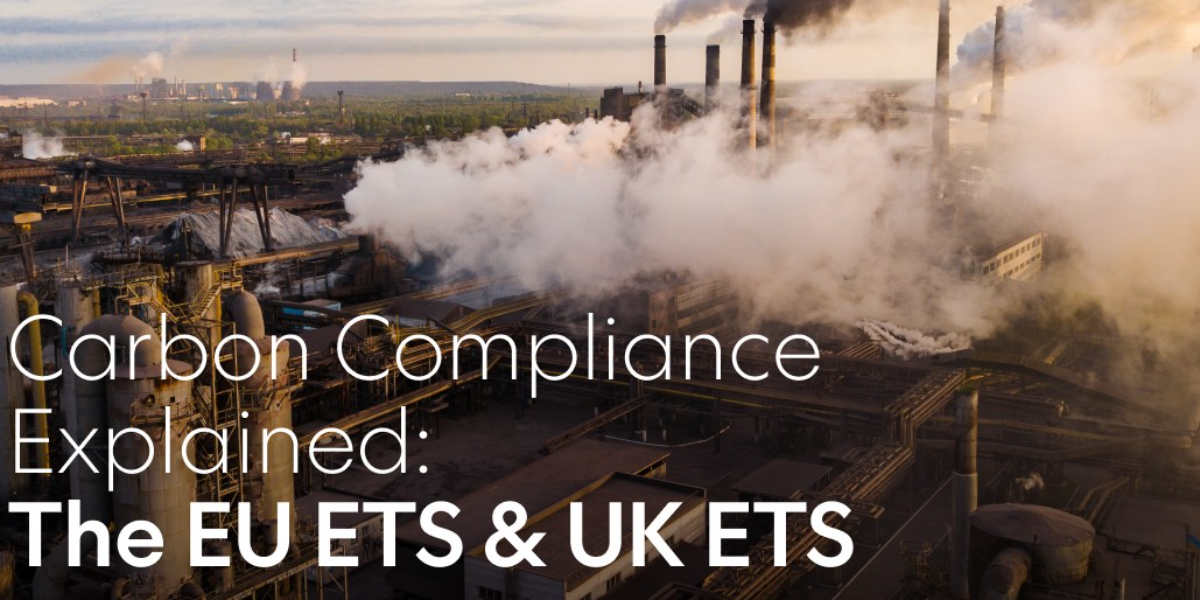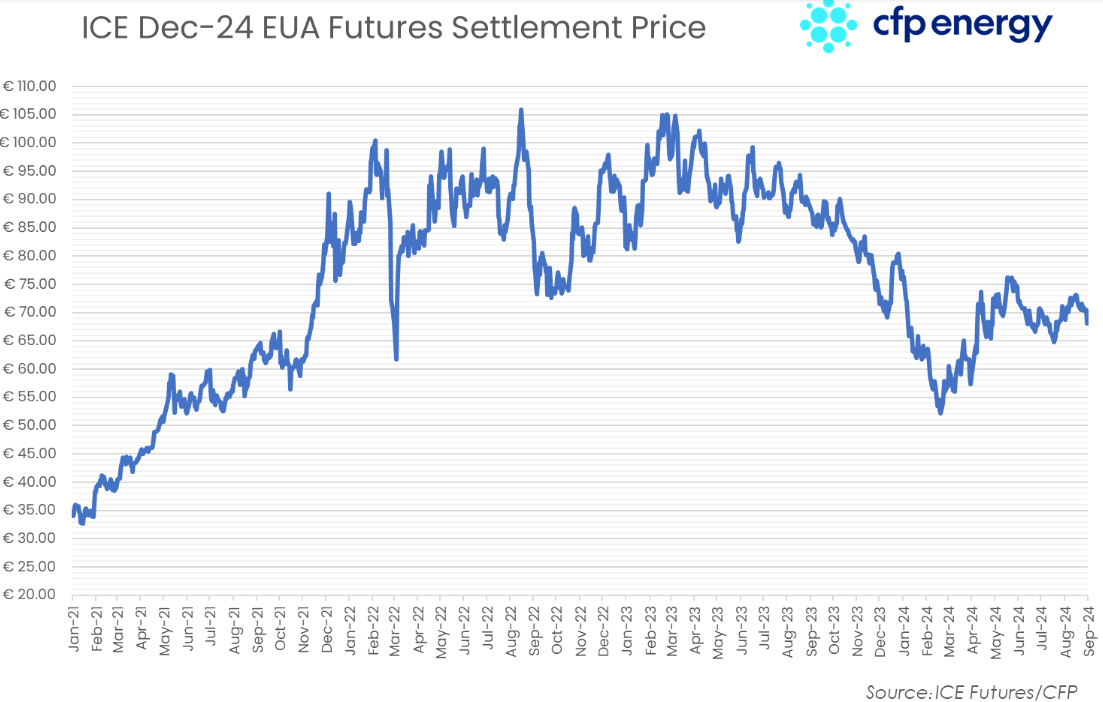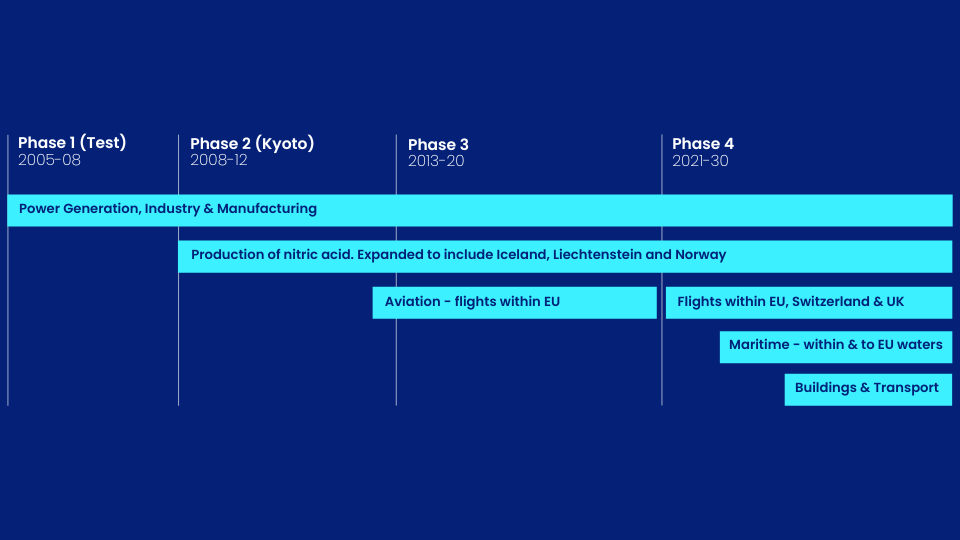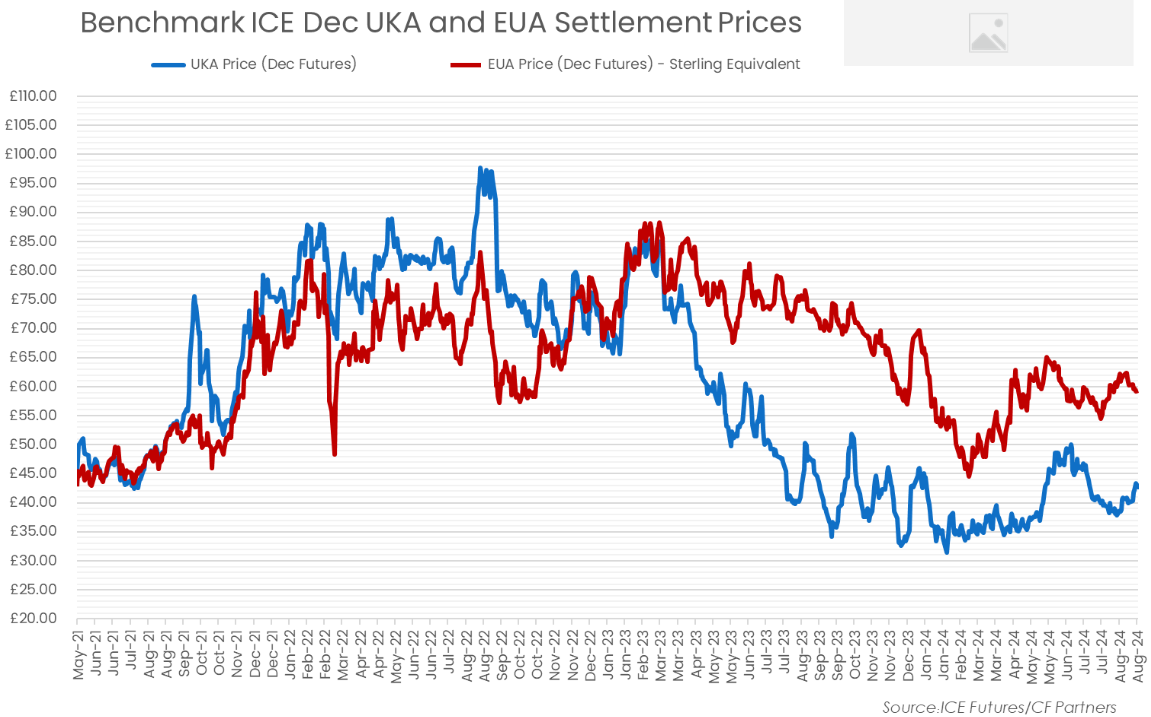20 August 2024
George Brown

With 20+ years of trading experience under his belt, covering a variety of markets and industries, Tim now helps organisations navigate the complexities of carbon markets, offering businesses a clear perspective and highly bespoke approach to decarbonisation.
In this feature guide, CFP Energy provides context and insights into ETS carbon compliance, shining a light on the tightening grip of carbon regulations and the future development of carbon markets.
For immediate support and access to carbon allowances, you can connect with Tim and his team, here.
For one of the UK’s leading carbon traders and experts, a shift of seismic proportions is appearing on the horizon for UK and European businesses.
“It’s a fairly new kind of marketplace and one that is difficult to navigate and understand,” said Tim.
“The media can often fail to provide accurate context and analysis of carbon markets when assessing the role they play in decarbonisation. When you actually look at the results, putting a price on carbon has been effective in supporting growth in renewable power generation and lowering industrial emissions, especially in the last 5 years.”
In simple terms, carbon compliance markets are created by the adoption of emissions trading schemes (ETS) and provide a platform where companies can buy or sell carbon allowances to meet the ETS regulatory limits on carbon emissions. The overall cap or target gets lower each year, helping to reduce overall greenhouse gases.
For example, if a large organisation is covered by ETS and emits carbon into the atmosphere, it must buy carbon allowances from either government run primary auctions or a dedicated secondary market in order to comply annually with those emission regulations.
For power generators, airline operators, manufacturers, industrial giants, shipping operators and other businesses that are responsible for the highest levels of carbon emissions, emission trading schemes are the approach of choice for policy makers looking to achieve net zero by 2040.
“Organisations that are bound by ETS regulations often struggle to make sense of carbon markets and face significant carbon price exposure as a result. They have a vested interest in reducing their emissions but often the technology, fuel alternatives and capital funding aren’t yet available, so purchasing carbon allowances is the only way to comply, at least in the short term. As the carbon market has evolved, companies are facing a real challenge to keep up to date with policy, allowance prices and effectively manage carbon compliance costs.”
“It’s a volatile commodity market so there are a variety of forces that impact prices, many of which are unpredictable while others, like the impact of regulations or weather changes, can be anticipated. CFP Energy’s carbon experts work hard to develop the best compliance strategy for our clients depending on their specific allowance requirements, budget and procurement process.”

As you can see from the above price curve, the EU Allowance or EUA price under the EU ETS trebled from 2021 to a high of €100 in 2022 as the expectation of tougher targets under the EU Green deal. However, significant growth in renewable energy as well as lower industrial output caused prices to fall back in 2023.
Tim’s approach, and understanding of the sector, is key for CFP’s partners and clients who rely upon his guidance to navigate carbon markets and comply with ETS regulations. In his experience, the last few years have seen compliance strategies change significantly.
“Back in Phase 3 of the EU ETS (2013-2020), when EUA prices were often under €10 per tCO2e, budgets were small and purchasing allowances was treated as a once-a-year procurement exercise. Fast forward to 2024 and a much more active risk management strategy is needed to manage rising compliance costs and increasing market volatility. Alongside the growing impact of price fluctuations, both the UK and EU ETS schemes are set to bring in tougher targets and expand in scope. In order to support organisations manage these new market dynamics, CFP Energy has grown its carbon compliance capabilities and risk management solutions "
.png)
As the EU ETS target ambition increases to 2030 and beyond under the Fit for 55 package and free allocations to industry reduce with the adoption of CBAM in 2026, we see a paradigm shift ahead in respect of exposure to EU ETS compliance costs.
The EU ETS works on the 'cap and trade' principle. A cap is set on the total amount of greenhouse gases that can be emitted by the operators covered by the system. The cap is reduced over time so that total emissions fall.
Within the cap, operators buy or receive emissions allowances, which they can trade with one another or via a secondary market as needed.
The EU ETS covers around 40% of the EU's greenhouse total gas emissions as the largest emitters are bound by this specific scheme.
Smaller scale emitters will increasingly also be required to reduce their emissions under specific regulations in countries across Europe and the UK, such as the inclusion of shipping, the German nEHS and buildings and transport under ETS II from 2028. As time moves on, the scope of emissions regulations will grow, demanding that organisations take action to reduce carbon and their reliance on traditional fuels.

Tim continued: “The EU pioneered emissions trading and it’s been an effective way of reducing emissions and driving innovation in technology to reduce carbon emissions. As the EU ETS targets get tougher there will be a greater scarcity of allowances and most carbon analysts forecast EUA prices to be back over €100 per CO2e by 2027.”
.png)
Businesses in the UK are no longer bound by the European-based Emissions Trading Scheme (ETS) following Brexit. As a result, in 2021 the UK ETS has been established and organisations based in the UK must now access a specific UK carbon market with its own prices and regulations.
UK ETS policy reforms released in July 2023 were perceived as less ambitious than the EU equivalent. Combined with reduced allowance demand from fossil fuel power generators due to the rapid growth in renewable energy, the UK Allowance price halved in 2023, falling well below the equivalent EUA price
The signs are all pointing in the right direction as far as UK renewable power is concerned. On a particularly blustery and sunny day, up to 70% of the UK’s energy can be generated by renewables. I think it’s an incredible achievement to have developed that level of capacity over the last 10 years and it means that the UK is about to end its 142-year coal legacy as the last coal-fired power station in the UK closes in September 2024."

“Carbon markets are incredibly complex.” Said Tim. “The issues relating to forecasting carbon emissions, keeping up to date with market fluctuations and planning compliance with the EU and UK ETS needs expert management and guidance.
We’re trying to support the net zero challenge but there are major hurdles to overcome when it comes to emissions regulations and market forces.”
Despite the challenges and associated complexities, Tim and his team predict a radical shift to take place as regulations continue to tighten across the UK and Europe.
As ETS targets get tougher across both the UK and EU schemes, carbon allowances are forecast to increase in price, which should drive fundamental change in ETS compliance strategy and a greater focus on carbon abatement opportunities through technology innovations.
“It’s an interesting sector to be involved in and I believe that we’re helping clients manage a realistic and practical path towards ETS compliance and ultimately net zero. Companies can’t just snap their fingers and stop using traditional fuels or emitting carbon into the atmosphere, but we can help them develop a strategy to get there eventually and manage compliance cost in the meantime.”
"The bottom line is this. If companies do not plan for tighter regulations and higher carbon prices, they will be exposed to significant rises in compliance costs in a future that demands increased sustainable and low carbon operations."
For access to carbon markets and a consultation with Tim and his team, get in touch here.
Update: Your obligations as an importer or producer of foreign-manufactured goods affected by the UK CBAM. Contact CFP Energy to mitigate future CBAM cost exposure.
Update: Your obligations as an importer or producer of foreign-manufactured goods affected by the UK CBAM. Contact CFP Energy to mitigate future CBAM cost exposure.
As the aviation industry navigates the first year of the Carbon Offsetting and Reduction Scheme for International Aviation (CORSIA) Phase 1 (2024–2026), this week’s approvals of additional carbon crediting standards have influenced the market landscape, introducing both opportunities and complexities.